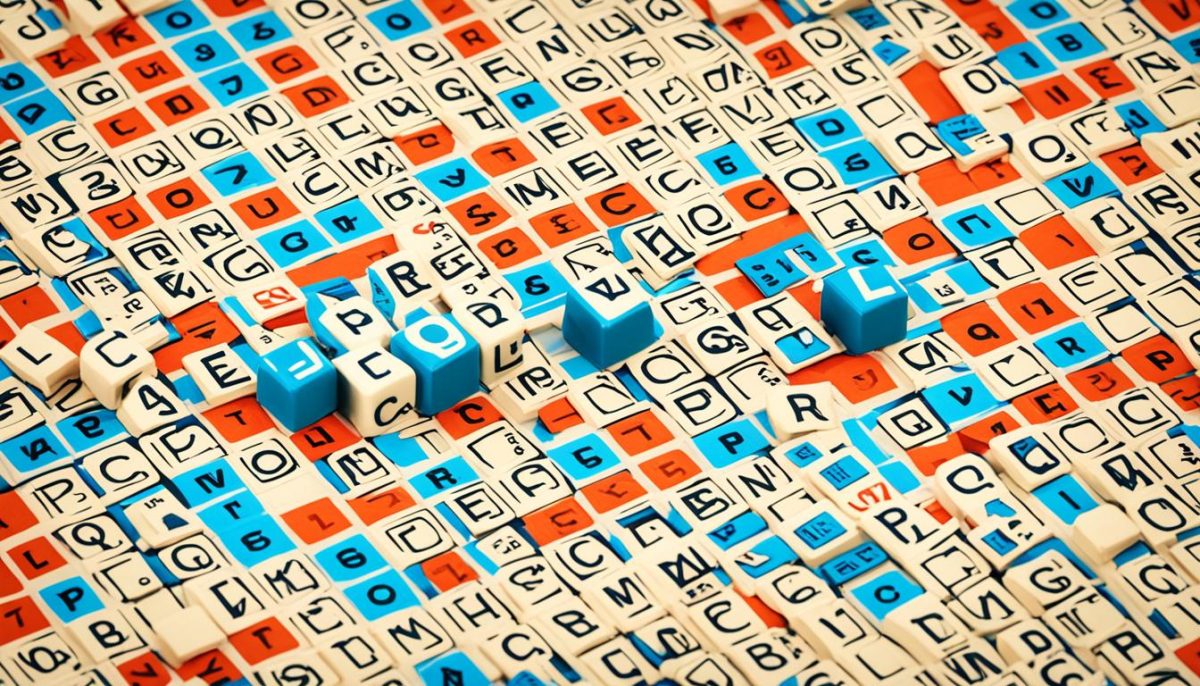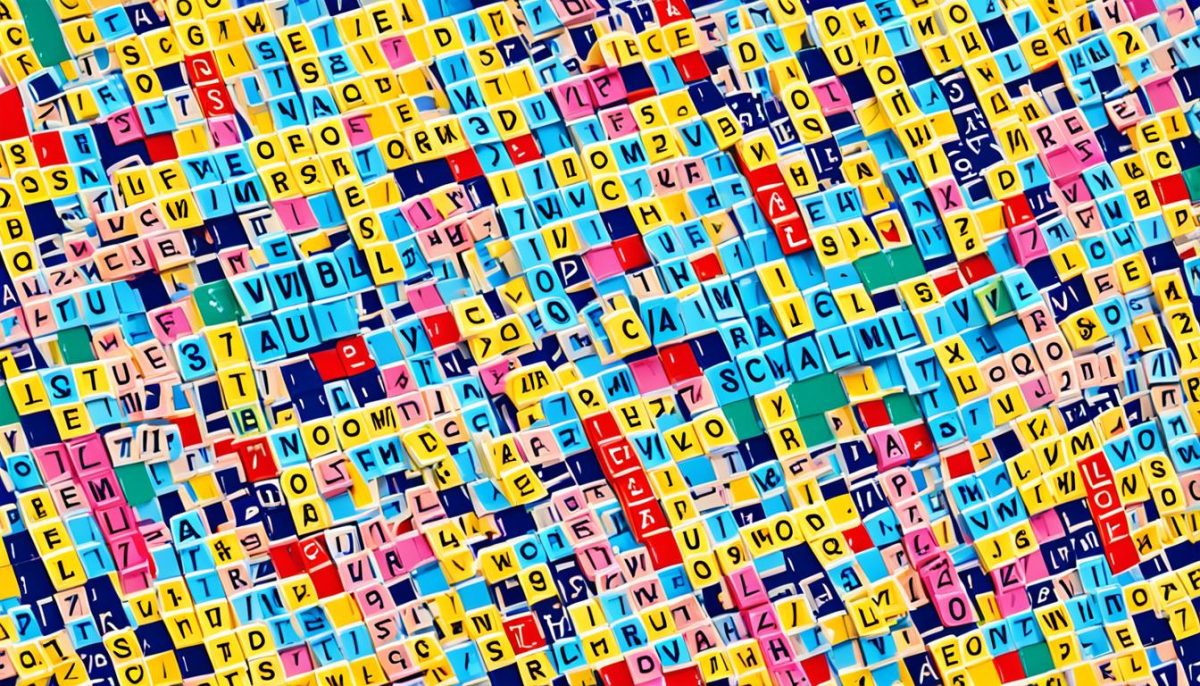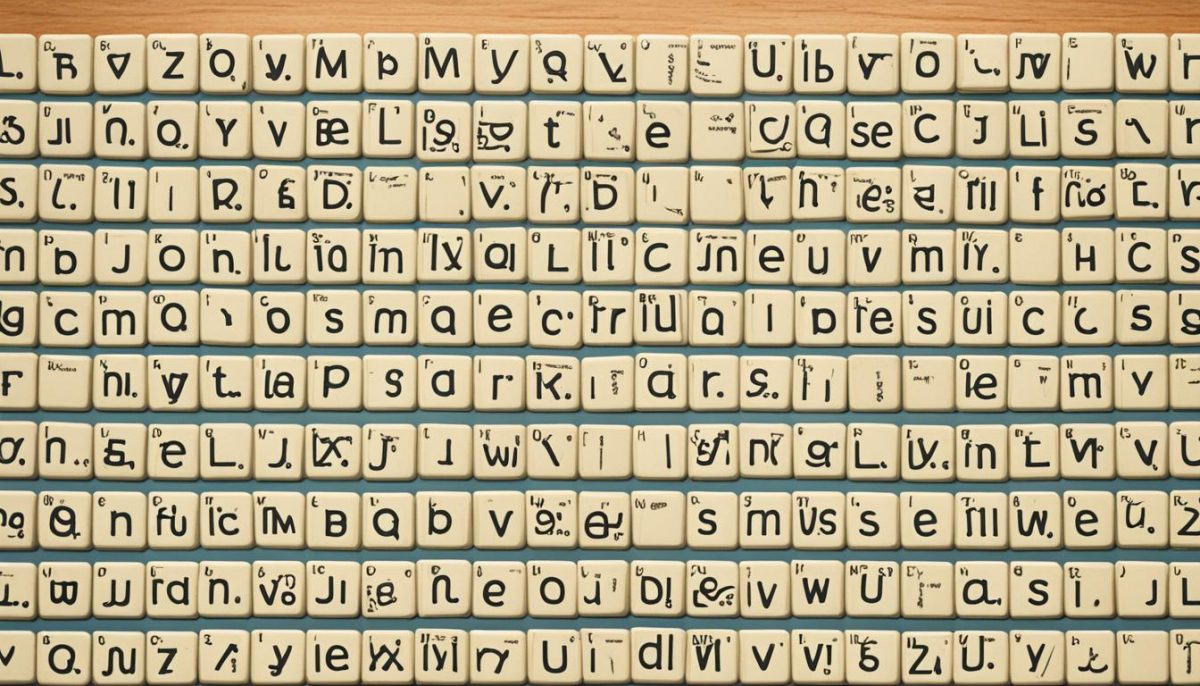If you’re diving into the world of Scrabble, understanding Scrabble letter distribution is key to mastering the game. With 100 tiles in total for the standard English-language version, it’s more than just a word game; it’s a strategic challenge. Among these tiles are two blank tiles, serving as wild cards in your quest for high-scoring words.
The specific breakdown of letters mirrors the letter distribution in the English language, promoting balanced and fair play. Knowing the exact Scrabble tile count and the presence of each letter helps both novice and veteran players build better strategies and form more words. The official Scrabble pieces are designed to reflect this frequency, making each letter count in your path to victory.
Overview of Scrabble Alphabet
The Scrabble alphabet is a fascinating adaptation of the standard 26-letter English alphabet to fit the game’s unique dynamics. Understanding the Scrabble letter list is crucial in mastering the game. Each letter from A to Z in the Scrabble tiles has a specific role, allowing players to create a broad range of words on the board.
Both novice and seasoned players can significantly benefit from familiarizing themselves with the English alphabet in Scrabble. The letters are distributed with a frequency that reflects their commonality in the English language, making gameplay more relatable and strategic. For instance, there are more ‘E’ tiles than ‘Z’ tiles, aligning with how frequently these letters appear in English texts.
To give you a detailed insight, here is a look at how the Scrabble letter list breaks down in a standard game, ensuring you understand the distribution and can plan your game moves effectively:
| Letter | Quantity | Point Value |
|---|---|---|
| A | 9 | 1 |
| B | 2 | 3 |
| C | 2 | 3 |
| D | 4 | 2 |
| E | 12 | 1 |
| F | 2 | 4 |
| G | 3 | 2 |
| H | 2 | 4 |
| I | 9 | 1 |
| J | 1 | 8 |
| K | 1 | 5 |
| L | 4 | 1 |
| M | 2 | 3 |
| N | 6 | 1 |
| O | 8 | 1 |
| P | 2 | 3 |
| Q | 1 | 10 |
| R | 6 | 1 |
| S | 4 | 1 |
| T | 6 | 1 |
| U | 4 | 1 |
| V | 2 | 4 |
| W | 2 | 4 |
| X | 1 | 8 |
| Y | 2 | 4 |
| Z | 1 | 10 |
| Blank | 2 | 0 |
By understanding this detailed Scrabble letter list and the frequency of each letter in the Scrabble tiles, you can better anticipate your moves and enhance your gameplay strategy. Whether you are new or a seasoned player, knowing the distribution and value attached to the English alphabet in Scrabble will undoubtedly give you a competitive edge.
Distribution of Letters in a Scrabble Set
Understanding the Scrabble letter frequency is crucial for devising a robust strategy. The game comprises tiles with varying frequencies, which directly affect their utility and strategic importance.
Common Letters
In Scrabble, certain letters are more abundant, reflecting their frequent usage in English. The common Scrabble tiles include:
- E (x12)
- A (x9)
- I (x9)
- O (x8)
- N (x6)
- R (x6)
- T (x6)
- L (x4)
- S (x4)
- U (x4)
These easy-to-use Scrabble letters form the backbone of gameplay and are essential for creating a wide variety of words. Mastering their use can significantly enhance your overall game performance.

Rare Letters
On the opposite end of the spectrum, there are Challenging Scrabble letters that appear less frequently but are often high-value Scrabble tiles. They include:
- Q (x1)
- Z (x1)
- J (x1)
- X (x1)
- K (x1)
These tiles not only present unique Scrabble strategy for rare tiles but also add a layer of complexity to the game. Leveraging these letters effectively can lead to substantial point gains and potentially game-changing moves.
| Letter | Frequency | Point Value |
|---|---|---|
| E | 12 | 1 |
| Q | 1 | 10 |
| J | 1 | 8 |
| Z | 1 | 10 |
| O | 8 | 1 |
Point Value of Each Scrabble Letter
In the game of Scrabble, understanding the point value of each letter is crucial for maximizing Scrabble points and strategic letter placement. Let’s delve into the scoring system, starting with those high-point letters that can dramatically boost your score if used skillfully.

High-Point Letters
Scrabble high-score letters include ‘Q’, ‘Z’, ‘J’, and ‘X’, each having a significant impact on your overall game strategy. These letters carry higher points, making them essential for players aiming to score big. For example, ‘Q’ and ‘Z’ both have a point value of 10, while ‘J’ and ‘X’ are worth 8 points each. Placing these tiles on double or triple letter and word scores can exponentially increase your point tally. Here’s a quick view of their values:
| Letter | Point Value |
|---|---|
| Q | 10 |
| Z | 10 |
| J | 8 |
| X | 8 |
To effectively utilize these letters, focus on strategic letter placement. Aim to position them on premium squares and combine them with common letters to create high-value words. This approach not only maximizes your points but also leverages the strengths of your tiles.
Low-Point Letters
Although vowels and frequently used consonants like ‘E’, ‘A’, ‘I’, ‘O’, ‘N’, ‘R’, ‘T’, ‘L’, ‘S’, and ‘U’ are considered low-value Scrabble tiles, they play a vital role in the gameplay basics. These letters are essential for forming words and maintaining a dynamic game flow. Most of these have a point value of 1, but their abundance in the letter set makes them indispensable for creating opportunities.
| Letter | Point Value |
|---|---|
| E | 1 |
| A | 1 |
| I | 1 |
| O | 1 |
| N | 1 |
| R | 1 |
| T | 1 |
| L | 1 |
| S | 1 |
| U | 1 |
Using these Scrabble common letters effectively can pave the way for utilizing high-point letters. For instance, placing these low-value Scrabble tiles on the board while keeping an eye for potential spots for high-value letters can be a game-changer. Combining high and low-point tiles proficiently is key to mastering Scrabble gameplay basics, ultimately contributing to a winning strategy.
Letters Scrabble Game Strategy
Wrapping up our deep dive into Scrabble, let’s turn these insights into actionable Scrabble gameplay tips that can elevate your game. Effective letter management is crucial. Balancing both high and low-point letters on your rack can lead to strategic advantages. For instance, having a good mix of vowels and consonants makes it easier to form words, thus enhancing your game flow.
One essential tactic is rack optimization. Continuously analyze your current letters and aim for flexibility in word formation. Frequently shuffle the letters on your rack to get a fresh perspective on possible words. As you play, aim to clear out low-point letters judiciously, while saving high-point ones like ‘Q’ and ‘Z’ for premium squares on the board where they can maximize your score.
Lastly, adopt strategic Scrabble word formation techniques. Focus on high-scoring word placements, taking advantage of double and triple letter or word scores. Play defensively when necessary to block your opponent’s access to these premium squares. By integrating these Scrabble tactics into your gameplay, you’ll not only enhance your Scrabble playing experience but also significantly improve your chances of winning. Whether you’re a beginner or a seasoned player, these strategies will help you make informed decisions throughout the game.

